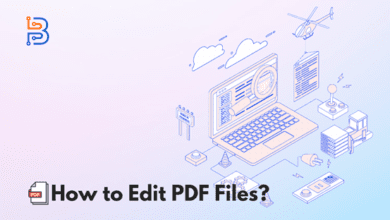Tips to Better Track and Manage Paid Subscriptions

In the modern digital era, paid subscriptions have seamlessly integrated into our daily routines. Whether streaming services like Netflix and Spotify or software applications like Microsoft Office 365 and Adobe Creative Cloud, subscriptions have become synonymous with convenience, granting us access to diverse services. As the prevalence of these subscriptions continues to rise, it becomes increasingly effortless to lose sight of them, resulting in unnecessary costs and potential financial strain. This article will provide valuable insights to enhance your ability to monitor and oversee your paid subscriptions effectively, which empower you to exercise control over your expenditures.
What are Paid Subscription Services?
The subscription business model operates by offering access to a product or service. Customers securely store their payment information, such as a credit card, with the subscription service provider. Subsequently, they are automatically charged for the service at set intervals, usually monthly, quarterly, or annual. Often, these recurring charges persist indefinitely until the subscription is actively canceled. Here are some prevalent examples of subscription services:
- Gaming Services
- Cloud Storage Services
- Beauty Product Subscriptions
- Book Subscription Services
- Meal Plan Delivery Subscriptions
- Online Fitness Classes
- Software Subscription Services
- Gift Subscriptions
Tips to Track and Manage Paid Subscriptions
The advent of the digital revolution has brought forth an age characterized by living through subscriptions, providing us access to a wide array of resources and services, from streaming entertainment to doorstep delivery. We find ourselves in a constant cycle of signing up for new subscriptions, encompassing everything from streaming services to online publications. However, as our roster of subscriptions continues to grow, keeping tabs on our expenses and ensuring we extract the maximum benefit from our investments can become quite a challenge. To help track and manage subscriptions, we examine some tips:
Create a Subscriptions Inventory
The first step to managing your paid subscriptions effectively is to create a comprehensive inventory. List all your current subscriptions, including the service name, billing cycle, amount, and payment method. This inventory will be a visual reference, giving you a clear overview of your financial commitments. Start by reviewing your bank and credit card statements to identify recurring payments. You may also want to check your email for subscription confirmation messages, which often contain important details about your subscriptions. Once you have compiled this information, organize it in a spreadsheet or a dedicated note-taking app for easy reference.
Evaluate Subscription Necessity
Now that you have an inventory of your subscriptions, it’s time to assess their necessity. Consider each subscription and ask yourself whether you are actively using the service and whether it provides value equivalent to its cost. If you find subscriptions you no longer use or need, it’s a good idea to cancel them immediately to free up your budget for more essential expenses. Remember that the occasional free trial you signed up for and forgot to cancel can accumulate into unnecessary expenses. Be proactive in canceling trials you don’t intend to continue using to avoid accidental charges.
Read Also: What is Amazon Digital Charge? A Comprehensive Guide
Set Up Subscription Alerts
Most subscription services provide notifications or alerts that can help you stay informed about upcoming payments and changes to your subscription status. Take advantage of these features by enabling email or mobile notifications for each subscription. This way, you’ll receive timely reminders before the next billing date, allowing you to review and make any necessary changes. Consider using budgeting apps or financial management tools that offer subscription-tracking features. These tools can help you monitor your subscriptions and provide insights into your spending patterns.
Use Dedicated Payment Methods
One effective strategy to manage subscriptions is to use dedicated payment methods. Instead of using your primary credit or debit card for all subscriptions, create a separate bank account or obtain a prepaid card exclusively for these expenses. By doing so, you can easily track subscription-related transactions, and it becomes simpler to cancel or change payment methods when needed. A dedicated payment method also limits the potential impact on your primary finances if a subscription service experiences billing issues or security breaches.


Set a Budget for Subscriptions
It is crucial to allocate a portion of your budget specifically for subscriptions. Determine how much you will spend on monthly subscriptions and stick to that limit. This budgetary discipline will help you avoid overspending on subscriptions and keep your financial priorities in check. To ensure your budget remains realistic, periodically review and adjust it as needed. If you discover new subscriptions you’d like to try, consider reallocating funds from other areas of your budget to accommodate them.
Bundle Services When Possible
Many subscription services offer bundle options that allow you to access multiple services for a discounted price. For example, you can bundle your cable TV, internet, and streaming services or consolidate software subscriptions into a single package. Bundling reduces your subscription expenses and simplifies management by consolidating billing and payments. Before subscribing to new services, research whether bundling options are available and cost-effective. Also, periodically review your existing bundles to ensure you’re still getting the best value for your money.
Monitor for Price Increases
Subscription services may periodically increase their prices, often without significant notice. Regularly check for notifications from your subscription providers regarding upcoming price changes to prevent surprises and budgetary strain. Stay informed about industry news and trends that indicate potential price hikes for specific services. If you discover a subscription has become too expensive or no longer provides sufficient value, don’t hesitate to explore alternatives or consider canceling it. Be proactive in negotiating with providers, as they may offer discounts or promotional rates to retain your business.
Conclusion
Paid subscriptions have transformed how we access and consume various services, but they can also lead to financial strain if not appropriately managed. To regain control over your subscription expenses, you can follow these steps: create an inventory of your subscriptions, evaluate their necessity, set up alerts, use dedicated payment methods, budget your spending, bundle services, and monitor for any price increases. With these seven tips, you’ll save money and ensure that your financial resources are allocated to the subscriptions that bring you the most value. Remember, it’s all about being mindful and proactive in managing your subscriptions to achieve a healthier financial future.





